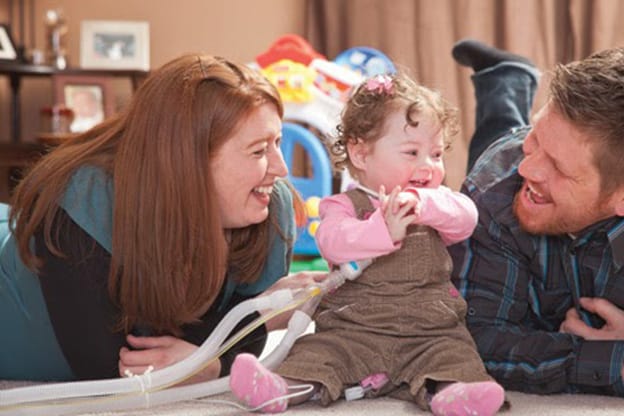Podcast: Play in new window | Download
Hi it’s Patrik Hutzel from INTENSIVE CARE AT HOME where we provide tailor made solutions for long-term ventilated Adults & Children with Tracheostomies whilst providing quality care and where we also provide tailor made solutions for hospitals and Intensive Care Units to save money and resources where we provide win-win situations for all of our stakeholders and clients.
So in last week’s blog, I talked about
You can check out last week’s blog by clicking on the link below this video
In today’s blog, I want to talk about a situation that we see over and over again in our line of work with intensive care at home.
Is It True that Support Workers Can’t Handle Safely Ventilated Patients with Tracheostomies at Home?
So some families actually come to us, they have a loved one at home on a ventilator with a tracheostomy. Sometimes it’s only a tracheostomy, sometimes our clients don’t have a tracheostomy, but they are requiring BiPAP ventilation without a tracheostomy.
And sometimes our clients are not even ventilated, but they are medically very complex and they do need an ICU nurse 24 hours a day because of their medical complexities and often it is to manage their unstable airways. And again, that is a specialist skill that can only be handled by intensive care nurses.
So a situation that we see over and over again is that ventilated clients are at home with support workers and support workers quite frankly, can’t handle ventilated patients with tracheostomies safely. So why do I say that?
If you look at a hospital environment, any ventilated patient is in intensive care. They’re not on a general ward because a ventilated patient, whether it’s with a tracheostomy or with a breathing tube or noninvasively ventilated, such as BiPAP or CPAP need intensive care nurses full stop.
There is no room for negotiation here. Absolutely no room for negotiation. It’s a specialist skill, it’s life support. People are in life support, and that’s why they go into intensive care. So why would anybody in their right mind send a support worker into somebody’s home when somebody’s on a ventilator or medically complex? That is simply, I argue, it’s a criminal act. That’s how I see the situation there.
Because even in a hospital or even at home, not even a general nurse is capable of looking after ventilated patient with a tracheostomy because it’s a specialist ICU nursing skill.
So the reasons why sometimes ventilated patients end up with support workers at home is simply that most people that are dealing with the funding of those clients are not medically competent and they’re not medically trained. They just look at it from a business perspective.
Whilst we can cut the cost of an ICU bed by 50%, we certainly can’t cut the cost of an ICU bed by 80%. That’s just not doable. If you do that, you’re putting lives at risk. And we know for a fact, we have evidence that people have died at home because they were looked after by support workers instead of intensive care nurses.

We have evidence that people have more readmissions back into ICU when they’re being looked after by support workers or by general nurses that have no ICU training, as opposed to being looked after by us when we have intensive care nurses.
Now don’t get me wrong, this is a reasonably high risk for us as well, looking after ventilated patients at home because people at the end of the day are on life support, but it is a risk that we believe we can manage much better with a team of highly skilled, highly experienced intensive care nurses.
As a matter of fact, we’re employing hundreds of years intensive care nursing experience in our business. That also includes pediatric intensive care nursing experience. So compared that to support workers, I mean, anybody can be a support worker. You can literally pick people off the street and put them in an environment where they look after ventilated patient, but they don’t know what they’re doing.
And again, we have evidence that people have died because of this lack of skills in a home care environment.
The other issue is, that, community care simply lacks the lobby that hospitals have or intensive care units have. And we are certainly, trying to get quality standards into home care when it comes to ventilation and tracheostomy and medical complexities, where ICU nurses are required, how do we do that?
Quite simply, we have accreditation for intensive care at home nursing. And I argue that we are looking after the highest acuity clients in the community in Australia. There is no other service that can look after sicker clients in the community than we do. Because again, we have the accreditation, we have the know-how. We have the intellectual property to look after those clients at home and we have the workforce to make it happen.
Intensive care at home accreditation
Furthermore we are providing evidence based care, meaning that research has gone into what is the safest option to take ventilated patients with tracheostomy home. And the research and the evidence has clearly shown that the only way to look after ventilated patients with tracheostomy at home is with intensive care and paediatric intensive care nurses that have a minimum of two years ICU experience.
This has been documented in the mechanical home ventilation guidelines that we have published on our website here
https://intensivecareathome.com/mechanical-home-ventilation-guidelines/
Other services have no expertise in this. They just go with what’s given without even knowing what they’re doing. Another issue that we’re finding is, that people who are in charge of funding simply don’t understand the medical complexities.
They just look at a business case without looking at a clinical case. And most people that we have found that deal with funding are not doctors. They’re not nurses. They simply don’t know what they don’t know.
And one of the recommendations that I have for anybody watching or listening to this or reading this is simply, you need to come to us for advocacy because we’ve been there. We’ve helped our clients to get the funding that they need for their medical complexities, for the ventilation, tracheostomy. Again, it’s an intensive care nursing skill and nothing else.
So, if you are at home and you’re finding you have insufficient support, insufficient funding, if you’re finding that your support workers are not showing up, they’re pulling out of shifts. We’ve seen all of this before. Why are they pulling out of shifts? Well, if they get paid $20, $25 an hour, and they’re looking after somebody on life support, that’s really dangerous. And they could work for the same amount of money and stock some shelves in a supermarket and not have somebody’s life in their hands.
So again, I do believe that looking after ventilated patients in the community with support workers, it’s dangerous. I do believe it’s a criminal act. And anybody that’s responsible for that needs to take accountability for it.
Also, there is no supportive evidence or guidelines around support workers or even general nurses being able, safe and competent to look after ventilated patients at home. And there never will be, because it would be like flying an airplane with a stewardess instead of the trained pilot.
So again, if you are finding you have support workers in the home, they are unreliable. They’re pulling out of shifts. Those are the reasons why they’re doing this, and if you need more help and you need more funding, you should contact us as soon as possible because we can help you take the next steps.
I hope that helps. If you have any questions, please let me know.
Now, if you have a loved one in intensive care and you want to go home with our service intensive care at home and if you want to find out how to get funding for our service and how it all works, please contact us on one of the numbers on the top of our website, or send me an email to [email protected]
Please also have a look at our case studies because there we highlight more about what we can do for clients, how clients can live at home with ventilation and tracheostomies and you can look at our case studies as well at our service section
Intensive care at home Case studies
And if you are at home already and you need support for your critically ill loved one at home, and you have insufficient support or insufficient funding, please contact us as well. We can help you with all of that.
And if you are an intensive care nurse or a pediatric intensive care nurse with a minimum of two years, ICU or pediatric ICU experience, and you ideally have a critical care certificate, please contact us as well. Check out our career section on our website. We are currently hiring ICU and pediatric ICU nurses for clients in the Melbourne metropolitan area, Northern suburbs, Sunbury, Mornington Peninsula, Frankston area, South Gippsland, as well as Wollongong in New South Wales.
www.intensivecareathome.com/careers
So we are also an NDIS, TAC (Victoria) and DVA (Department of Veteran affairs) approved community service provider in Australia. Also have a look at our range of full service provisions.
Also, we have been part of the Royal Melbourne health accelerator program in the past for innovative healthcare companies.
https://www.thermh.org.au/news/innovation-funding-announced-melbourne-health-accelerator
Thank you for watching this video and thank you for tuning into this week’s blog.
This is Patrik from intensive care at home, and I’ll see you again next week in another update.







